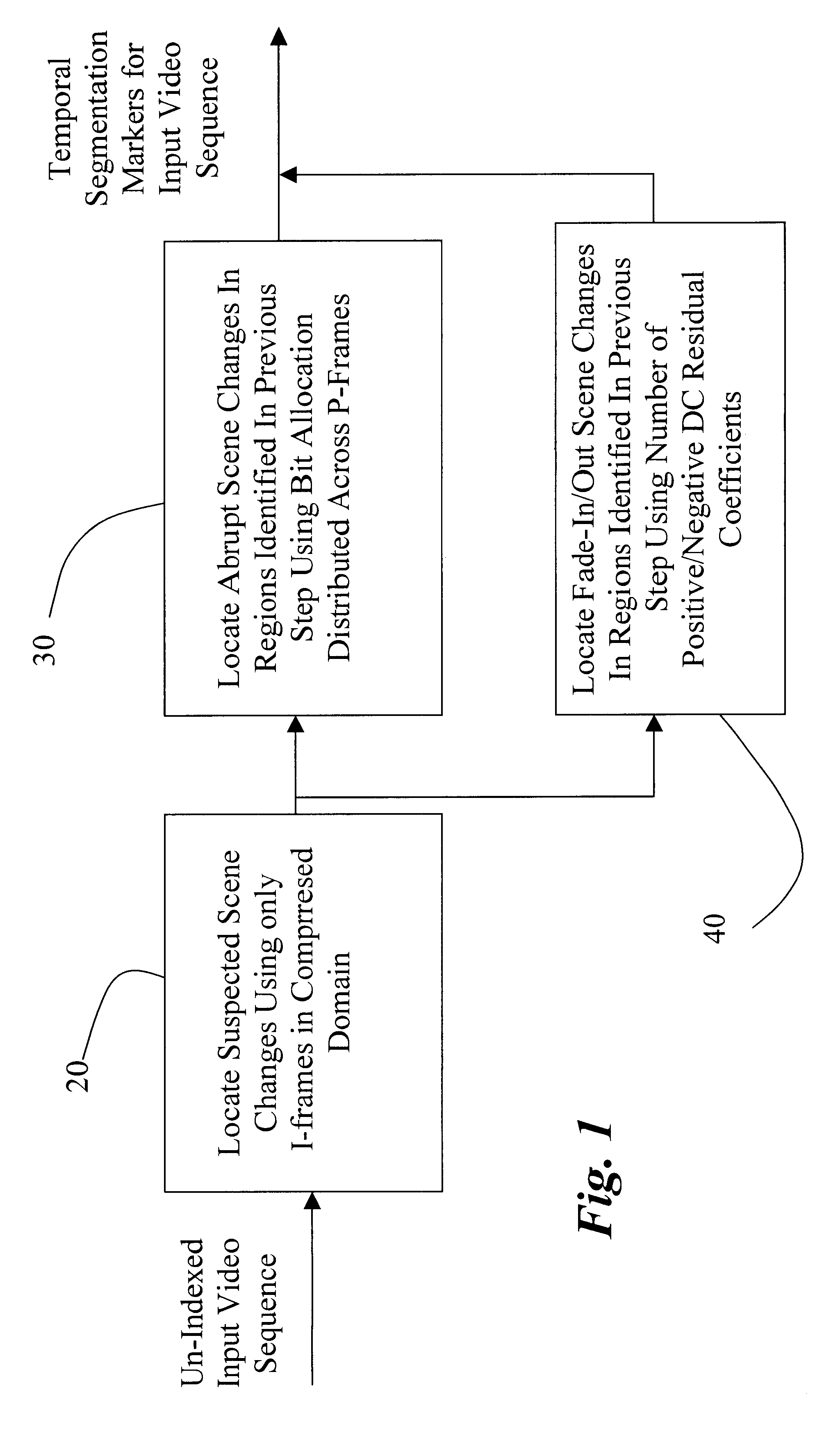Methods of scene change detection and fade detection for indexing of video sequences
a technology of video signal sequence and scene change detection, which is applied in the field of scene change detection and fade detection for indexing of video signal sequence, can solve the problem of requiring additional computations, and achieve the effect of reducing the number of times of additional computation
- Summary
- Abstract
- Description
- Claims
- Application Information
AI Technical Summary
Benefits of technology
Problems solved by technology
Method used
Image
Examples
Embodiment Construction
.
Referring to the schematic diagram of FIG. 1 of the drawing, it can be seen that methods according to a first aspect of the present invention make use of a preliminary step which involves locating suspected scene changes using only I-frame information in the compressed domain (block 20 of the diagram). This step relies upon use of DC image-based criteria to "qualify" certain pairs of frames as indicating gradual or abrupt scene changes. Thereafter, the qualified frame associated information is further processed to locate abrupt and / or fade-in, fade-out scene changes using either a bit allocation distribution criterion across P-frames (block 30) or a criterion comparing the number of positive / negative DC residual coefficients (block 40) with respect to each P-frame in the regions where there is a suspected scene or object change.
In this manner, temporal segmentation markers may be generated and are associated with the input video sequence to locate and identify the particular types ...
PUM
 Login to View More
Login to View More Abstract
Description
Claims
Application Information
 Login to View More
Login to View More - R&D
- Intellectual Property
- Life Sciences
- Materials
- Tech Scout
- Unparalleled Data Quality
- Higher Quality Content
- 60% Fewer Hallucinations
Browse by: Latest US Patents, China's latest patents, Technical Efficacy Thesaurus, Application Domain, Technology Topic, Popular Technical Reports.
© 2025 PatSnap. All rights reserved.Legal|Privacy policy|Modern Slavery Act Transparency Statement|Sitemap|About US| Contact US: help@patsnap.com



